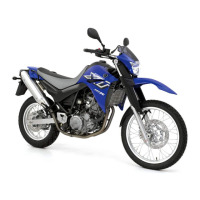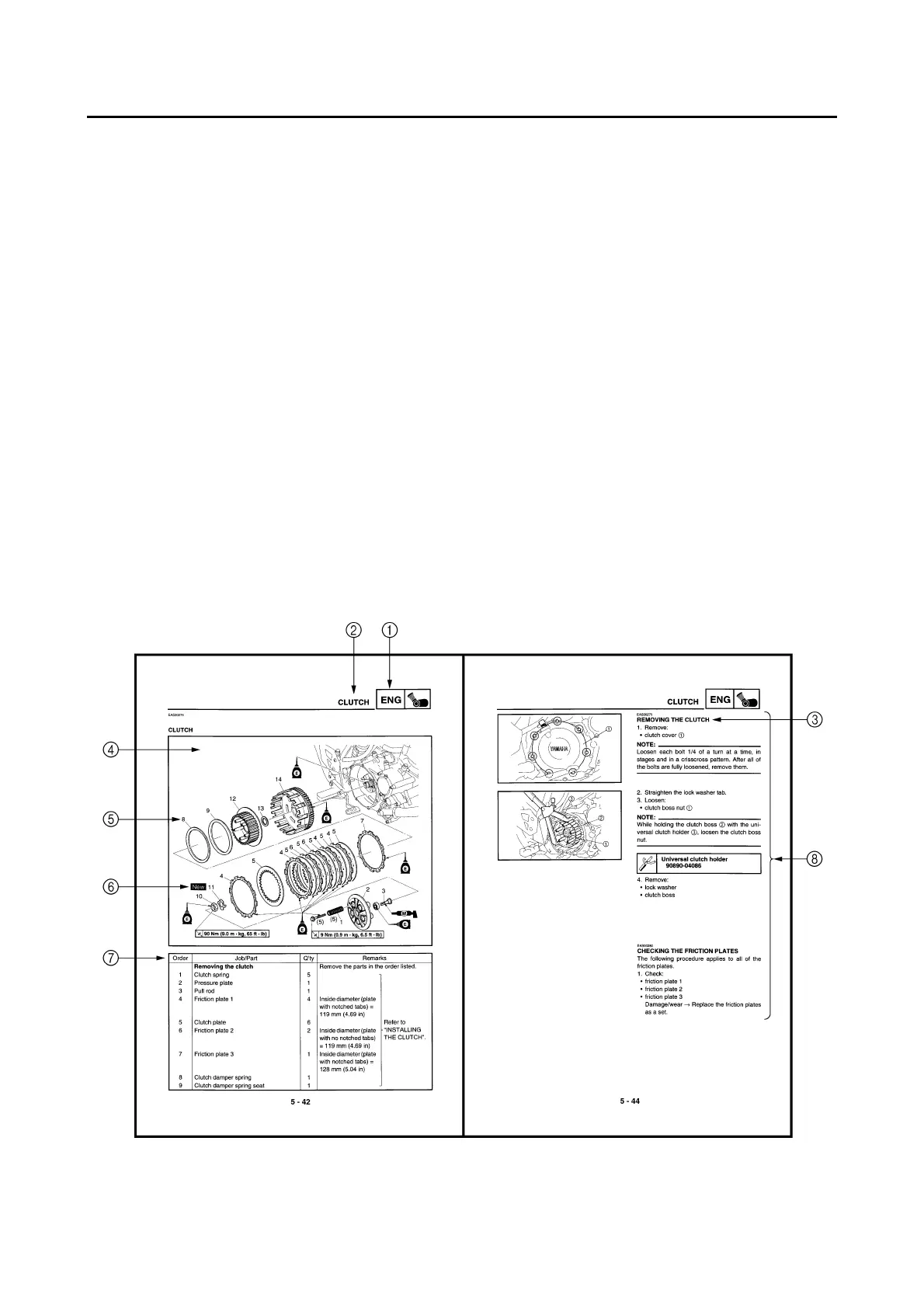
 Loading...
Loading...
Do you have a question about the Yamaha XT660R S and is the answer not in the manual?
| Displacement | 660 cc |
|---|---|
| Bore x Stroke | 100.0 mm x 84.0 mm |
| Compression Ratio | 10.0:1 |
| Fuel System | Fuel Injection |
| Ignition System | TCI |
| Starter System | Electric |
| Transmission System | 5-speed |
| Final Drive | Chain |
| Front Suspension System | Telescopic forks |
| Front Tyre | 90/90-21 M/C 54S |
| Rear Tyre | 130/80-17 M/C 65S |
| Overall Width | 865 mm |
| Overall Height | 1, 230 mm |
| Seat Height | 865 mm |
| Wheelbase | 1, 505 mm |
| Wet Weight | 181 kg |
| Fuel Tank Capacity | 15 litres |
| Oil Tank Capacity | 2.9 litres |
| Engine Type | Liquid-cooled, 4-stroke, single cylinder, SOHC |
| Maximum Power | 48hp (35kW) @ 6, 000rpm |
| Frame | Steel diamond |
| Rear Suspension System | Swingarm, (link suspension) |
| Front Brake | Single 298mm disc, 2-piston caliper |
| Rear Brake | Single Disc, 245 mm |
Details on identifying the motorcycle, including VIN and model label.
Overview of key features and outline of the motorcycle's systems.
Crucial guidelines for maintenance, disassembly, and parts handling.
List of specialized tools required for tune-up and assembly.
Key dimensions, weight, and model codes for the motorcycle.
Detailed technical data for the engine, including bore, stroke, and oil.
Technical data related to the frame, wheels, tires, brakes, and suspension.
Technical data for the electrical system components, including battery and ignition.
Specific torque values for engine components during assembly.
Specific torque values for chassis components during assembly.
Identifies lubrication points and recommended lubricant types for engine and chassis.
Instructions and diagrams for routing electrical and control cables.
Overview of recommended checks and adjustments for reliable vehicle operation.
Schedule of regular maintenance tasks based on mileage and time.
Procedures for removing and installing fairings, seat, and covers.
Steps for removing, installing, and checking the fuel tank and pump.
Procedures for removing and installing the air filter and related components.
Checks and adjustments for engine components like valve clearance and idling speed.
Procedures for removing, checking, and installing the front wheel and brake disc.
Procedures for removing, checking, and installing the rear wheel, brake disc, and sprocket.
Detailed procedures for brake pads, calipers, master cylinders, and fluid.
Procedures for removing, disassembling, checking, and installing front fork legs.
Procedures for removing, checking, and installing the handlebar and its components.
Procedures for removing, checking, and installing the steering head components.
Procedures for handling, removing, checking, and installing the rear shock absorber.
Procedures for removing, checking, and installing the swingarm and drive chain.
Steps for removing exhaust, leads, cables, hoses, ignition coil, and engine.
Procedures for removing, checking, and installing the cylinder head.
Procedures for removing, checking, and installing rocker arms and camshaft.
Procedures for removing, checking, and installing valves and valve springs.
Procedures for removing, checking, and installing the cylinder and piston.
Procedures for removing, checking, and installing the clutch components.
Procedures for checking, assembling, and installing the oil pump.
Procedures for removing, checking, and installing balancer gears.
Procedures for removing, checking, and installing the shift shaft and stopper lever.
Procedures for removing, checking, and installing the starter clutch and A.C. magneto.
Procedures for separating, checking, and assembling the crankcase.
Procedures for removing, checking, and installing the crankshaft assembly.
Procedures for removing, checking, and installing the transmission components.
Procedures for removing, checking, and installing the radiator and cap.
Procedures for checking and installing the thermostat.
Procedures for removing, disassembling, checking, assembling, and installing the water pump.
Overview of the fuel injection system, including wiring and ECU functions.
Schematic showing electrical connections for the fuel injection system.
Explanation of the ECU's self-diagnostic capabilities and fault codes.
Guide to diagnosing and resolving engine trouble warnings and FI system issues.
Instructions for accessing and using the diagnostic mode on the meter.
Illustration and list of major electrical components on the motorcycle.
Procedure for testing switch continuity using a pocket tester.
Guide to checking switches for damage, connections, and continuity.
Procedures for checking bulbs, sockets, and LEDs for damage or proper function.
Schematic illustrating the ignition system's wiring.
Guide to diagnosing and resolving ignition system failures.
Schematic showing the electric starting system's wiring.
Procedures for removing, disassembling, checking, and assembling the starter motor.
Schematic illustrating the charging system's wiring.
Guide to diagnosing and resolving charging system failures.
Schematic showing the lighting system's wiring.
Guide to diagnosing and resolving lighting system failures.
Schematic showing the signaling system's wiring.
Guide to diagnosing and resolving signaling system failures.
Schematic showing the cooling system's wiring.
Guide to diagnosing and resolving cooling system failures.
Schematic showing the immobilizer system's wiring.
Overview of the motorcycle's immobilizer system features.
Procedures for registering or replacing keys for the immobilizer system.
List and explanation of malfunction codes displayed by the immobilizer system.
Guide to diagnosing and resolving immobilizer system failures.
Common causes and checks for engine, fuel system, and electrical starting issues.
Troubleshooting steps for abnormal engine idling speed related to engine, fuel, or electrical systems.
Troubleshooting for issues affecting engine and fuel system performance at higher speeds.
Diagnosing and resolving problems with gear shifting, including difficulty or jumping out of gear.
Troubleshooting for clutch issues like slipping, dragging, or improper assembly.
Diagnosing causes of engine, cooling system, fuel system, chassis, and electrical overheating.
Diagnosing causes of poor braking performance, including worn parts and fluid issues.
Troubleshooting for front fork oil leaks or other malfunctions.
Diagnosing causes of unstable handling related to handlebar, steering, tires, wheels, or frame.
Troubleshooting for issues with headlights, turn signals, brake lights, and horn.